Louisiana’s flavorful cuisine is as diverse as its vibrant culture, offering a medley of unique dishes that locals proudly claim as their own. From hearty seafood stews to sweet, festive desserts, each dish tells a story of the state’s rich culinary history and multicultural influences. Whether you’re a seasoned foodie or a curious traveler, these iconic dishes are sure to provide a taste of Louisiana’s soul.
1. Po’ Boy Sandwich

Biting into a crusty French bread roll packed with juicy fried shrimp, crispy lettuce, and tangy pickles captures the essence of a Po’ Boy, a staple in Louisiana cuisine. Originating during a streetcar strike in New Orleans, these sandwiches were created to feed the ‘poor boys,’ which is how they got their name. Today, they are a cherished tradition.
Served hot with a spicy touch of Creole seasoning, each bite reveals the perfect harmony of textures and flavors. Whether stuffed with shrimp, oysters, or roast beef, a Po’ Boy stands as a testament to the creativity and resilience of Louisiana’s people.
2. Gumbo
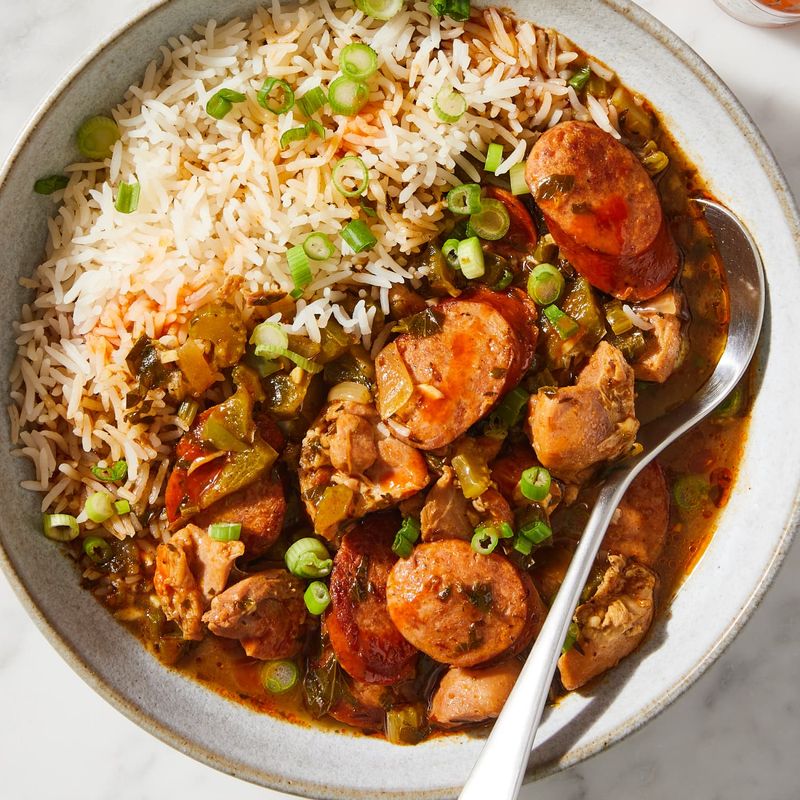
Every spoonful of gumbo is like a journey through Louisiana’s history. The dish is a savory stew that combines ingredients like okra, chicken, and sausage in a rich roux-based broth. Gumbo’s roots trace back to Africa, France, and Spain, blending culinary traditions into one pot.
Whether enjoyed during a family gathering or a festival, gumbo warms the soul and brings people together. Its versatility is unmatched—each region adds its own twist, making every gumbo experience unique. It’s a reminder of the state’s melting-pot heritage, celebrated around dinner tables across Louisiana.
3. Crawfish Etouffee
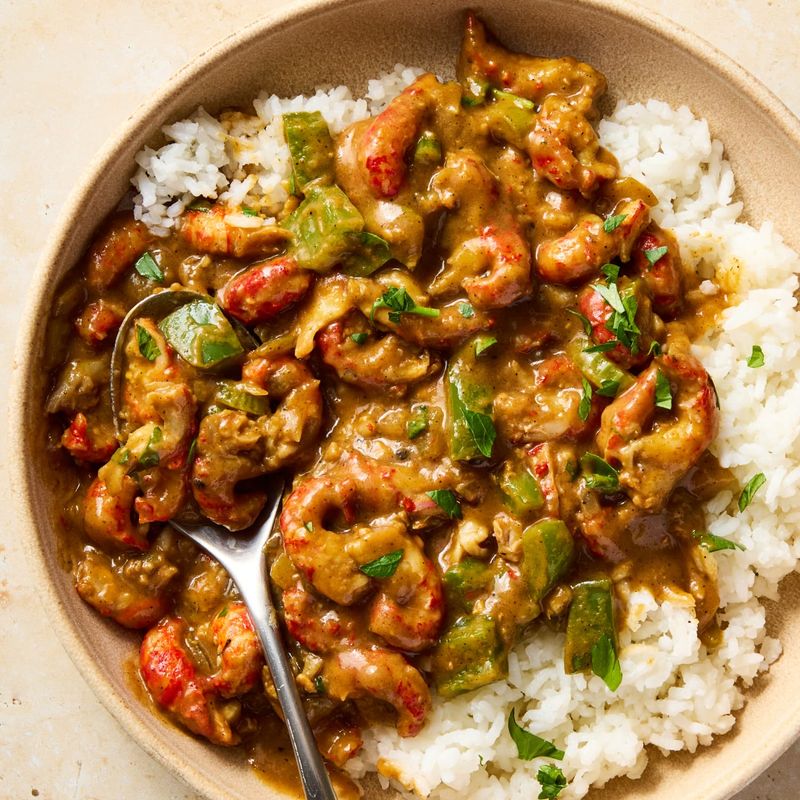
A spicy, savory sauce drapes over succulent crawfish tails, garnished with a sprinkle of fresh parsley—this is crawfish etouffee, a beloved dish that captures the heart of Cajun and Creole cooking. Its name, “etouffee,” meaning “smothered,” highlights the rich sauce that envelops the seafood.
Often enjoyed during crawfish season, it brings families and friends together to celebrate. The dish’s origins are deeply rooted in the bayous of Louisiana, where fresh crawfish are abundant. Crawfish etouffee is a testament to the region’s resourcefulness and love for bold flavors.
4. Jambalaya
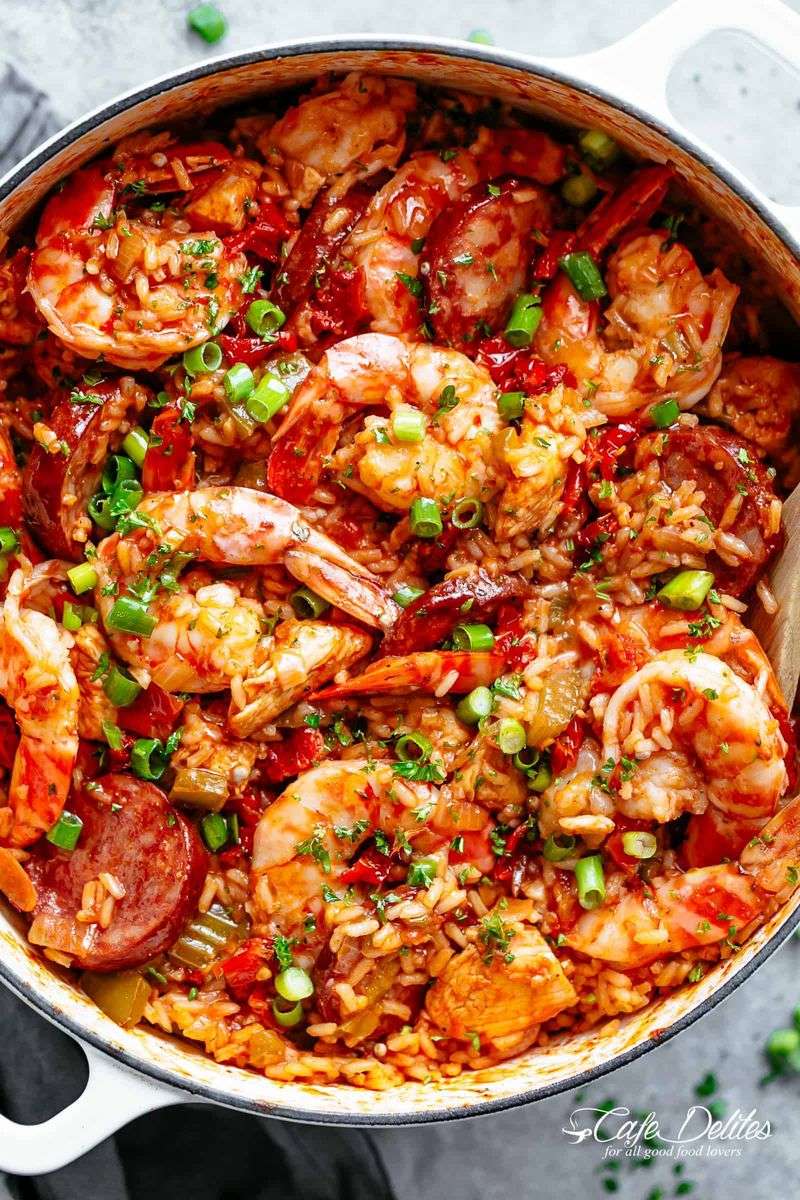
Jambalaya is a lively mix of rice, meat, and vegetables, often featuring a spicy kick from Andouille sausage. Its name is believed to have originated from the Provençal word ‘jambalaia,’ meaning a mix or mash-up. This dish embodies Louisiana’s cultural fusion, combining Spanish, French, and African influences.
Cooking jambalaya is often a communal activity, with families gathering to create this one-pot wonder. The symphony of flavors in each mouthful keeps you coming back for more. It’s a dish that not only feeds the body but also nourishes the spirit of togetherness.
5. Muffuletta
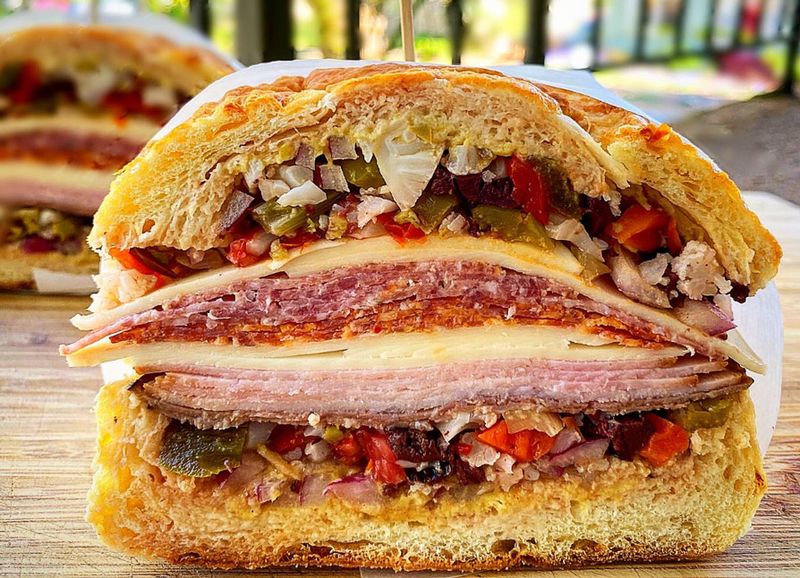
Born in the heart of New Orleans’ Italian community, the muffuletta sandwich is a delicious creation. This hearty sandwich features layers of Italian meats, cheeses, and a vibrant olive salad, all nestled in a round sesame-seed loaf. Its origins can be traced back to Italian immigrants who settled in the city.
The key to its unique flavor is the marinated olive salad, which adds a tangy zing to every bite. Muffulettas are a popular choice for a quick, satisfying meal, embodying the spirit of New Orleans’ diverse cultural tapestry.
6. Beignets

Beignets are a delightful, fluffy treat that have become synonymous with New Orleans. These fried dough pastries are generously coated in powdered sugar, making them a sweet indulgence enjoyed at any time of day. Originating from French settlers, beignets have become a cherished part of the local culinary scene.
Typically served with a steaming cup of café au lait, they are a must-try for anyone visiting the city. The experience of biting into a warm beignet while sipping coffee is a simple pleasure that defines the leisurely lifestyle of New Orleans.
7. Fried Alligator

An adventurous dish that encapsulates Louisiana’s wild side, fried alligator features tender alligator meat, breaded and fried to crispy perfection. Often served as an appetizer, it offers a taste reminiscent of chicken but with a distinct twist.
In many Southern restaurants, fried alligator is a staple on the menu, showcasing the state’s diverse wildlife and culinary creativity. It’s a dish that surprises and delights, inviting the daring to explore new flavors. Whether sampled at a festival or a local eatery, it serves as both a conversation starter and a culinary adventure.
8. Red Beans And Rice

Red beans and rice is a comforting dish that embodies the essence of Southern hospitality. Traditionally prepared on Mondays, this dish features slow-cooked red beans paired with rice and often includes slices of smoky Andouille sausage. Its roots lie in the creative use of leftover ingredients by early settlers.
The meal is a testament to the resourcefulness and simplicity of Louisiana cooking, providing nourishment and warmth to those who enjoy it. Red beans and rice is more than just a meal; it’s a symbol of home and family in the heart of the South.
9. King Cake

A King Cake is not just a dessert; it’s a celebration of Mardi Gras in every bite. This vibrant cake, decorated in purple, green, and gold, is a staple during the Carnival season in Louisiana. Its unique feature is the tiny plastic baby hidden inside, symbolizing luck and prosperity.
The tradition of baking a King Cake dates back to the 18th century, with roots in French and Spanish cultures. Sharing a King Cake with friends and family is a cherished ritual, embodying the festive spirit and long-standing traditions of Louisiana.
10. Boudin
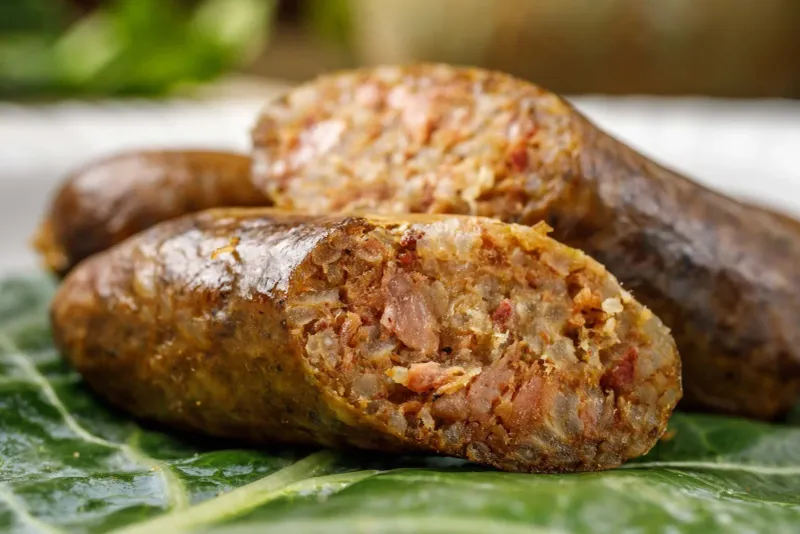
Boudin is a flavorful sausage that speaks to the ingenuity and bold flavors of Cajun cuisine. Made from a savory mixture of pork, rice, and spices, it’s a popular snack enjoyed across Louisiana. The dish is deeply rooted in the rural traditions of Acadian people, who made use of every part of the hog.
Often enjoyed on road trips or at local meat markets, boudin is a testament to the community’s resourcefulness. It’s not just about eating but about sustaining cultural ties and sharing the taste of home with others.
Leave a comment